The Importance of Thermal Design and Analysis in Product Development: A Key to Success
Team Expert Thermal2024-10-04T03:56:53+00:00In today’s fast-paced and competitive market, companies are constantly striving to develop innovative products that meet performance, reliability, and cost goals. A critical, yet often overlooked, aspect of product development is thermal design and analysis. Many companies prioritize aesthetics, functionality, and features, but neglect the importance of managing heat—a mistake that can lead to serious consequences such as performance degradation, costly redesigns, delays in certification, or even product failures.
This blog will highlight the significance of thermal design and analysis in product development, explain the consequences of not integrating thermal studies early on, and emphasize the importance of optimizing thermal design for improved cost, size, and performance.
Why Thermal Design Matters
Every product—whether a smartphone, a data center server, or a piece of industrial equipment—generates heat during operation. Properly managing this heat is essential to prevent overheating, which can cause performance issues, reduced longevity, or even product failure. Thermal analysis and design involve understanding heat flow within the system, how materials respond to heat, and how to optimize the system to prevent overheating.
Components such as heat sinks, thermal interface materials (TIMs), and the path for heat dissipation to environment (air or liquid) are critical to ensuring efficient heat dissipation. If the thermal management system is not optimized early in the design process, the result could be underperforming or unreliable products.
Thermal Design Process: Key Phases

The thermal design process can be broken down into several phases, each crucial for creating an optimized product:
Phase 0: Brainstorming on Thermal Design Requirements
In this initial phase, the team collaboratively explores and documents the thermal design requirements of the product. This includes considering factors such as:
- Heat generated by various components
- Temperature limits of each component
- Enclosure form factor and Industrial Design constraints
- Weight restrictions
- Acoustic noise limitations
- Expected operating ambient conditions
- Desired reliability level
This comprehensive brainstorming session ensures that all potential thermal considerations are identified and documented, laying a solid foundation for the subsequent design phases.
Phase 1: Back-of-the-Envelope Calculations
This phase involves generating multiple potential design ideas and performing rough calculations to estimate feasibility and performance.
Phase 2: Preliminary CFD Modeling
Initial thermal simulations are conducted to evaluate various design concepts and eliminate infeasible solutions.
Phase 3: Detailed CFD Modeling & Mock-Up Measurements
Advanced thermal simulations and early mock-up tests help refine the design, identifying potential issues and necessary adjustments.
Phase 4: Subsystem and Component-Level Design, Heat Sink Selection
Detailed designs of specific components (heat sinks, TIM, fans, etc.) are completed, ensuring all parts work together for optimal heat dissipation.
Phase 5: Prototype Testing
Physical prototypes are built and tested to verify the thermal performance and adjust the design as needed.
Phase 6: System Thermal Characterization
The complete product undergoes final thermal testing and characterization to ensure it meets all design requirements and specifications.
The Consequences of Ignoring Thermal Design Early On
When thermal management is not integrated from the beginning of the product development process, companies can encounter significant issues that may derail the entire project:
Product Overheating and Failures: Components such as CPUs, GPUs, memory, power modules, and batteries are highly sensitive to temperature. Overheating can lead to reduced performance, shorter lifespans, and in extreme cases, complete failure. In addition, the thermal management of optical devices, such as cameras, optical networking transceivers, and lasers, must go beyond merely meeting temperature limits for components. It’s crucial to address the impact of thermal expansion (Athermalization) to maintain precision in optical performance.
Performance Throttling: Many devices are designed to throttle performance when temperatures exceed safe thresholds. While this protects the hardware, it also means reduced performance, which can negatively impact the user experience.
Increased Costs: Ignoring thermal considerations early in the process often leads to costly rework. Retrofitting larger cooling components or higher-grade materials can inflate the bill of materials (BOM) and delay production.
Certification Delays: Many industries have stringent thermal performance and safety certification standards. Failing to meet these standards can delay certifications, holding up product releases and time to market.
Project Delays: Late identification of thermal issues requires redesigns, testing, and more validation, which can severely delay product launches.
Key Components of Thermal Design
- Heat Sources
In electromechanical systems, several components contribute to heat generation:
- Processors (CPUs/GPUs): These high-power components in computers and servers generate substantial heat during operation.
- Power Electronics: Devices like inverters, converters, and power supplies can also produce significant heat due to energy conversion inefficiencies.
- Batteries: Found in various applications like electric vehicles and consumer electronics, batteries require effective thermal management for safety and optimal performance.
- Memory: High-performance memory modules, especially in demanding applications like High Performance Computing, AI Computing, gaming or data centers, can also generate a considerable amount of heat.
Understanding the heat profile of each source is crucial for designing an efficient thermal solution. This includes knowing the heat dissipation rate, maximum temperature, and location of heat sources to strategically place cooling components within the product.
- Heat Sinks
Selecting the right heat sink is essential to achieving efficient thermal management. The process begins with understanding the thermal load of the heat source, space constraints, and the operating environment. The primary factors to evaluate in heat sink selection include footprint, material, fin design, and thermal resistance.
- Basic Heat Sink Selection (Extruded Heat Sinks):
Extruded heat sinks are typically the first option due to their balance of cost-effectiveness and performance. They offer good thermal performance for many applications with moderate heat loads. During this stage, engineers consider the fin number, fin thickness, base thickness, and overall footprint to optimize heat dissipation. If the thermal resistance is acceptable and space allows, an extruded heat sink is usually sufficient.
- Basic Heat Sink Selection (Extruded Heat Sinks):
- Evaluating Skived/Zipper Fin Heat Sinks:
If the heat dissipation requirements exceed the capacity of extruded heat sinks, advanced designs like skived or zipper fin heat sinks come into play. Skived heat sinks are made from a single block of metal, creating thin and dense fins, which significantly increases surface area without sacrificing structural integrity. Zipper fin heat sinks, on the other hand, are manufactured using stacked fin layers and offer flexibility in design to optimize airflow. These designs are often used in space-constrained or high-performance applications where more surface area and efficient airflow are necessary.
- Evaluating Skived/Zipper Fin Heat Sinks:
- Heat Pipes for Enhanced Cooling:
When passive cooling through air convection is no longer sufficient, heat pipes can be integrated into heat sinks to transfer heat away from the source more effectively. Heat pipes utilize phase-change technology to rapidly move heat from high-temperature zones to cooler areas, where it can be dissipated. Heat pipes are often used in applications with high power density or limited airflow, such as servers, high-performance GPUs, or densely packed electronics.
- Heat Pipes for Enhanced Cooling:
- Cold Plates for High-Power Applications:
In scenarios where the heat load is extreme, cold plates are the most efficient solution. Cold plates use liquid cooling to circulate water or other coolants, absorbing heat and carrying it away from the heat source. Since water has a much higher heat capacity than air, cold plates provide significant improvements in heat dissipation and are often used in industries like data centers, power electronics, and aerospace systems. This solution is more complex but necessary when passive air cooling fails to meet thermal requirements.
- Cold Plates for High-Power Applications:
- Advanced Cooling Solutions (Hybrid Designs):
For very demanding applications, a combination of heat pipes, cold plates, and air-cooled heat sinks may be necessary. These hybrid designs blend the benefits of passive and active cooling, ensuring efficient heat dissipation for high-power devices. For example, heat sinks with integrated heat pipes can improve performance while still leveraging ambient air cooling.
- Advanced Cooling Solutions (Hybrid Designs):
Throughout the selection process, engineers must carefully analyze package size, power dissipation requirements, airflow availability, material properties (e.g., copper for high conductivity or aluminum for weight savings), and the total system cost. Proper package analysis and simulation tools are often used to model heat dissipation and thermal performance before finalizing the design.
- Thermal Interface Materials (TIMs)
TIMs are essential for ensuring efficient heat conduction between components and heat sinks. They fill microscopic gaps and irregularities between surfaces, reducing thermal resistance and promoting optimal heat transfer. Some common types include:
- Thermal Grease: A paste-like material used to fill microscopic gaps between surfaces, facilitating better heat transfer.
- Thermal Pads: A more solid form of TIM, often used in lower-power applications for easy application and consistent thickness.
- Phase Change Materials (PCMs): These materials absorb heat as they transition from solid to liquid, providing efficient heat transfer and storage in systems with fluctuating thermal loads.
- Two-Part Curable Gap Fillers: These materials are dispensed as a liquid and then cure to a solid, providing excellent gap filling and thermal conductivity in applications with larger gaps or uneven surfaces.
Selecting the right TIM is crucial for minimizing thermal resistance between the heat source and heat sink, ensuring efficient heat dissipation and optimal performance. Factors to consider when choosing a TIM include thermal conductivity, thickness, application method, and compatibility with the materials being joined.
- Path for Heat Dissipation to the Environment
The path for heat dissipation plays a critical role in thermal design. It determines how effectively heat is transferred from the components to the surrounding environment. Several methods are commonly used:
Air Cooling
- Natural Convection: A passive method relying on the natural flow of air over heat sinks. It’s suitable for low-power applications but limited by ambient airflow.
- Forced Convection: Fans actively increase airflow over heat sinks, improving cooling capacity but adding noise and power consumption.
Liquid Cooling
- Liquid Cooling: More effective for high-power applications like data centers or gaming PCs. Liquids have a higher heat capacity than air, allowing them to transport heat more efficiently away from components. This method is often quieter than forced-air cooling and can be highly effective in compact designs.
Hybrid Solutions
- Hybrid Cooling: Some designs combine air and liquid cooling for optimal results. Air cooling might be used for less heat-intensive components, while liquid cooling handles high-power processors or GPUs. This approach offers both efficiency and flexibility in managing different thermal zones within a product.
The choice of heat dissipation method depends on various factors, including the product’s power requirements, size constraints, operating environment, and desired noise level.
- Thermo-Structural Design
Structural design plays a critical role in ensuring the reliability, durability, and overall performance of thermal management systems, especially in high-performance applications like electric vehicles (EVs), robotics, optical systems, cameras, and advanced electronic systems. While thermal design focuses on heat dissipation and temperature control, structural design addresses the mechanical integrity and stability of components under various physical stresses.
In thermal systems, structural design must account for mechanical loads, thermal expansion, and vibration, all of which can impact the performance of heat sinks, enclosures, and other cooling components. For example, the thermal expansion of materials due to temperature changes can lead to misalignments, warping, or even failure of critical components. To mitigate this, designers often incorporate materials with low coefficients of thermal expansion (CTE) and utilize mechanical reinforcements such as stiffeners and mounts to maintain the shape and position of heat-sensitive components.
In dynamic environments like EVs and robotics, structural design must also consider vibration and shock absorption. Constant motion and mechanical vibrations can degrade thermal interfaces, loosen fasteners, and even damage sensitive electronics. To prevent this, engineers use vibration-damping materials and robust mounting techniques to secure components like heat sinks, cooling fans, and enclosures. Additionally, finite element analysis (FEA) is often employed to simulate stress distributions across thermal and mechanical components, ensuring that they can withstand both thermal and mechanical loads without compromising performance.
Overall, the integration of thermal and structural design ensures that both thermal performance and mechanical reliability are optimized, leading to longer-lasting, more efficient systems in demanding applications.
Thermal Optimization: A Crucial Component of Product Success
It’s not enough to just consider thermal management—optimization is key. Early-stage optimization of thermal management system allows for significant improvements in product form factor, performance, and cost-effectiveness. By integrating thermal analysis early in the product development process, engineers can identify and correct potential issues, preventing the need for costly late-stage revisions.
Improving Product Form Factor and Weight: A poorly designed thermal management system may require oversized components, such as larger heat sinks or additional fans, which increase the product’s weight and size. Optimizing thermal design allows for the use of more compact solutions, ensuring that the product meets form-factor requirements without compromising on cooling efficiency.
Balancing Cost and Performance: High-performance cooling solutions are often expensive. By optimizing the thermal design, engineers can find the best balance between cost and performance, ensuring the product operates within its thermal limits without unnecessarily inflating costs. Early analysis helps to select materials, cooling components, and configurations that meet the required specifications at the most efficient cost.
Enhancing Product Reliability: Proper thermal design ensures that all components operate within safe temperature ranges, improving the overall reliability of the product. Reliable products lead to fewer failures in the field, fewer warranty claims, and a better reputation in the market. Device and equipment enclosure temp also need to be kept at specific limits for user safety and comfort.
Reducing Certification Risks: By addressing thermal design early and optimizing for performance, companies can ensure that their products meet industry standards more easily. This reduces the risk of certification delays and enables a faster time to market.
The Role of Thermal Modeling and Early Optimization
Thermal modeling plays a pivotal role in the design process by allowing engineers to simulate heat dissipation, system layout interactions, and system performance without building physical prototypes. With thermal CFD simulation software, such as Ansys Icepak, engineers can test various designs and materials, optimizing them for performance and cost-efficiency.
Cost Savings through Simulation: By using thermal models early in the development process, companies can avoid the costs associated with building multiple physical prototypes. This not only saves on material and labor costs but also reduces the time required to identify and fix thermal issues.
Parametric and Design of Experiments (DOE) Analysis: Thermal modeling allows engineers to perform parametric analysis and DOE to evaluate how different design variables—such as heat sink size, fan speed, and material choice—affect thermal performance. This approach helps engineers identify the best possible design while balancing size, cost, and performance requirements.
Faster Time to Market: Early optimization and thermal modeling accelerate the overall development process by identifying and resolving thermal issues before they become significant. This reduces the number of design iterations and ensures the product can move through the development process more quickly.
Certification Preparation: Thermal modeling provides valuable insights that can be used to ensure the product meets industry certification requirements. This not only reduces the risk of redesigns but also speeds up the certification process, allowing the product to reach the market faster.
How Expert Thermal Can Assist
At Expert Thermal, we specialize in providing comprehensive thermal design and analysis services that empower companies to bring their products to market faster, more efficiently, and with reduced risk. Our expertise spans a diverse range of electronic devices and equipment, including High-Performance Computing (HPC), AI Computing, Servers, Data Centers, Consumer Electronics, Telecom, Medical, and Military applications. We have a proven track record of delivering optimized thermal solutions that enhance product reliability, performance, and cost-effectiveness. Our services include:
Comprehensive Thermal and Structural Design Solutions: At Expert Thermal, we understand that successful product development requires more than just managing heat—it demands an integrated approach that balances thermal performance with structural integrity, reliability, and overall product design. Our team provides complete thermal and structural analysis and design services, ensuring your product’s thermal management system is optimized for performance, efficiency, and long-term reliability at every stage.
Complete Thermal Management Solutions: We offer end-to-end support, from the initial concept phase through to final production, ensuring that all aspects of your thermal management system are thoroughly analyzed and optimized. Here’s how we ensure comprehensive solutions:
- Heat Sink Selection and Optimization: Heat sinks are crucial for heat dissipation in most electronic systems. At Expert Thermal, we analyze the specific requirements of your system—including power density, space constraints, and ambient conditions—and select the ideal heat sink design, cold plate, heat pipes, and hybrid solution. Whether it’s custom-designed solution for high-performance applications or optimized off-the-shelf solutions, we make sure your thermal dissipation is maximized while keeping size and weight to a minimum.
- Thermal Interface Materials (TIM) Selection: TIMs ensure efficient heat transfer between components and heat sinks by minimizing thermal resistance. We help you select the most suitable TIM—whether it’s thermal paste, pads, or advanced phase-change materials—based on your system’s thermal budget, environmental conditions, and assembly processes.
- Fan and Cooling System Design: For active cooling solutions, we provide detailed design and analysis for fans and other airflow-based systems. We ensure optimal placement and configuration of fans to maximize cooling efficiency while minimizing noise and power consumption. Our noise-level management expertise ensures that your product not only stays cool but also meets acoustic performance requirements.
- Enclosure Layout and Airflow Optimization: The layout of components within the enclosure plays a vital role in ensuring effective airflow and thermal management. Our team uses advanced CFD (Computational Fluid Dynamics) simulations to optimize internal airflow paths, ensuring efficient cooling of critical components without creating hot spots. We also consider the enclosure’s structural integrity and material properties to ensure that heat is dissipated effectively while maintaining product durability.
- Noise and Acoustic Management: Balancing cooling efficiency with noise levels is critical, especially in consumer-facing products like laptops, smartphones, and home appliances. We design and test cooling systems that meet both thermal and acoustic targets, ensuring optimal fan speeds and placements to reduce noise without compromising thermal performance.
Structural Integrity for Long-Term Reliability
Effective thermal management must be paired with robust structural design to ensure product longevity. At Expert Thermal, we evaluate how thermal stresses impact the mechanical integrity of your product, from material expansion to potential warping or fatigue over time. Our structural analysis services include:
Material Selection: We help you choose materials that are both thermally conductive and structurally sound, ensuring minimal deformation under high heat conditions.
Component Placement and Stiffening: Strategic placement and stiffening of components ensure that thermal expansion and contraction do not impact the performance or safety of your system.
Vibration and Fatigue Analysis: Many electronic systems operate in environments where vibration and repeated thermal cycling can affect structural integrity. We conduct detailed fatigue and vibration analysis to mitigate these risks, extending your product’s lifecycle.
At Expert Thermal, we believe that thermal and structural design are not isolated processes but interconnected elements that together determine product success. By integrating thermal and structural analysis from the earliest design stages, we reduce the risk of costly redesigns, improve product reliability, and ensure that your product meets both performance and certification requirements on time.
Design for Manufacturability (DFM):
Our DFM approach ensures that your design is not only thermally optimized but also practical for large-scale production. We focus on making the design cost-effective, easy to assemble, and manufacturable with minimal complexities. By collaborating with your manufacturing teams early on, we help identify potential production challenges and implement solutions that reduce production time and cost, without sacrificing thermal performance or reliability.
Six Sigma Methodologies:
We integrate Six Sigma’s data-driven principles to ensure the highest levels of quality and efficiency in your thermal design. By utilizing this method, we identify and eliminate defects in the design process, control variations, and continuously improve product performance. Our team relies on in-depth statistical analysis to fine-tune designs, ensuring they meet stringent performance and reliability standards.
New Product Introduction (NPI):
Our NPI services guide you through the entire product development process, from conceptualization to market launch. We collaborate with your team at every stage, ensuring that thermal and structural considerations are incorporated into the initial design, reducing the risk of late-stage changes. This holistic approach allows us to streamline the process, ensuring that your product moves swiftly through development to final production with minimal delays.
Rapid Prototyping and Testing:
With rapid prototyping, we create fast, high-quality thermal mockups that allow for immediate testing and iteration. By combining this with comprehensive thermal testing, we can identify potential thermal issues early in the design phase. This process helps refine your product quickly, ensuring it meets performance specifications before entering mass production.
Certification Assistance:
Navigating industry certifications can be complex and time-consuming. Our experts guide you through the specific thermal and structural certification requirements of your industry, helping to avoid costly delays. Whether your product needs to meet UL, CE, or other thermal performance standards, we ensure that it complies with all regulatory requirements, allowing for a smoother certification process and faster time to market.
By partnering with Expert Thermal, your company gains access to a team of experienced consultants who can help streamline your product development process, reduce costs, and accelerate time to market. Whether you’re developing consumer electronics, automotive components, or industrial systems, we are here to help you succeed.
Let Expert Thermal be your trusted partner for thermal optimization, design for manufacturability, and rapid market entry. We are dedicated to ensuring your product performs at its best while staying within budget and meeting all certification requirements.

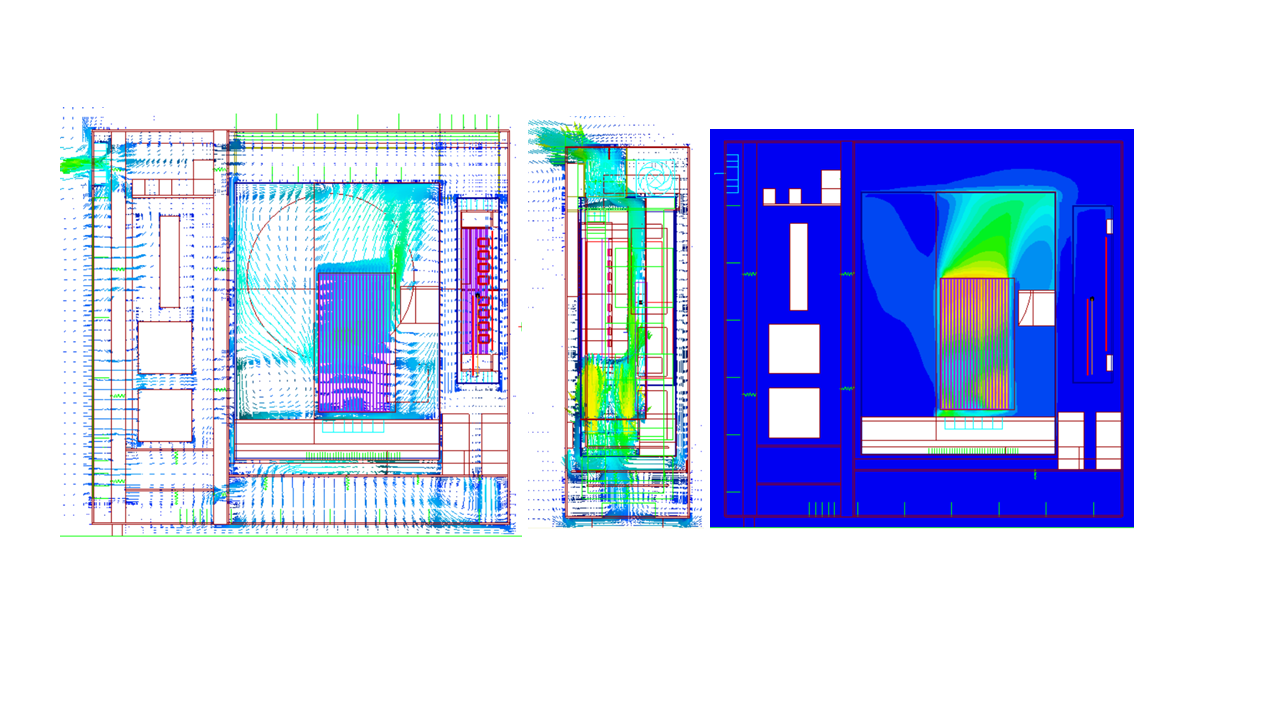
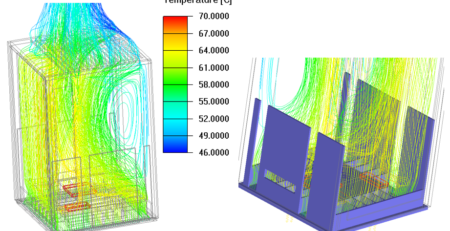


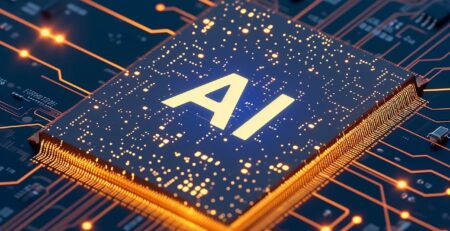
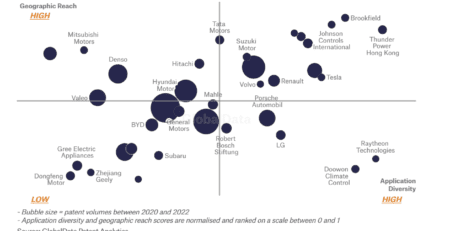


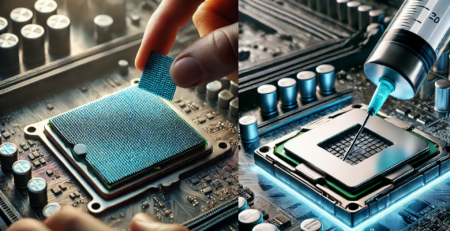
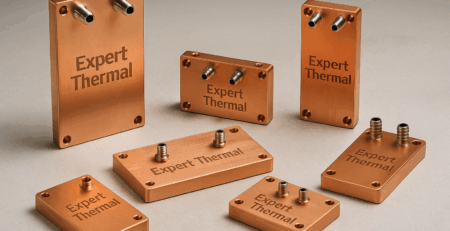
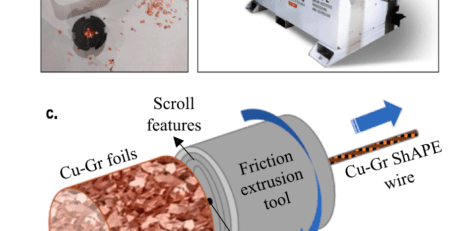
Leave a Reply